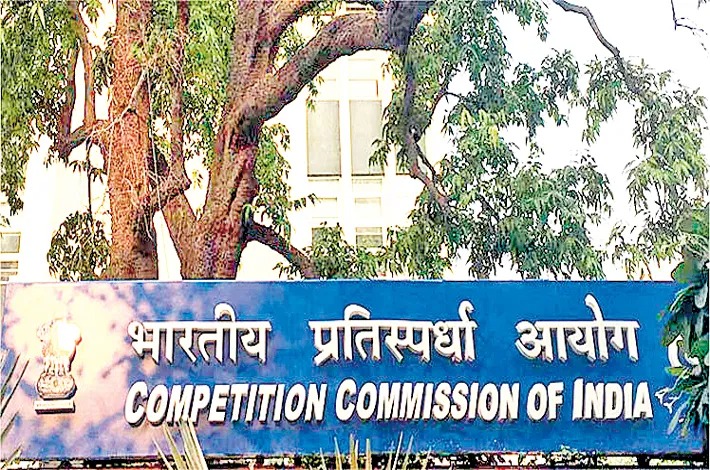Sheema Ali Khan, J.@mdashThis appeal is directed against the judgment of conviction dated 25th September, 2000 and the order of sentence dated 26th September, 2000 passed by the 1st Additional Sessions Judge, Bhabhua in Sessions Trial No. 220 of 1983/84 of 1997 whereby the Trial Court had found and held the appellants guilty for the offences punishable u/s 395 of the Indian Penal Code and sentenced them to undergo rigorous imprisonment for seven years. The prosecution case is that at about 11 PM on 9.4.1983, the informant (PW-.1) was sleeping in his house. The father of the (sic) (PW-2) was sleeping in the (sic) The sister of the informant, informed the family members that some dacoits had entered the house. The father of the informant raised an alarm. The villagers came there and finally the dacoits ran away taking away with them four boxes containing ornaments, cloths and household articles.
2. Altogether, eight witnesses were examined on behalf of the prosecution to prove the charges levelled against the appellants and identification of the appellants. PW-6 Syed Zakir Haque Akhtar is the Investigating Officer of this case. PW-8 Banshlochan Singh was the Additional Chief Judicial Magistrate at the relevant time and he was deputed as the Judicial Magistrate to conduct the Test Identification Parade. PWs-3 and 5 are the formal witnesses who proved various documents in this case. PWs-1, 2, 4 and 5 have been examined on the point of occurrence and identification of the appellants.
3. This case is based on the identification of the appellants by the prosecution witnesses. In the First Information Report, it has been stated that the informant was able to see the faces of the dacoits who had entered in the house in the torch light. PW-1, Prabhu Narayan Tiwary, the informant, supports the prosecution case and claims that several household articles and ornaments as well as watches etc. were looted away by the dacoits who entered into the house. He explains that his sister came and informed him that dacoits have entered in their house. He had attended the Test Identification Parade and has identified Sheomuni Chamar @ Loha (appellant no. 2) and Tufani Dusadh @ Paswan (appellant no. 4).
4. PW-2 Basdeo Tiwary is the father of the informant. He was sleeping in the Baithka when the occurrence is said to have taken place. He has identified Nirmal Chamar (appellant no. 1) and Tufani Dusadh (appellant no. 4) in the Test Identification Parade.
5. PW-4 Kashi Nath Tiwary claims to have identified the dacoits while they were running away. He states that there were altogether 10-11 miscreants. He attended the Test Identification Parade and identified Tufani Dusadh. In his evidence, he also proves the seizure of the articles that were recovered from the house of the appellants.
6. PW-5 Shyam Narayan Tiwary is also the member of the family. He claims that he was sleeping in the Baithka situated near his house when he heard the alarm raised by his family members. He could see the dacoits in the light of the torch and claims that he would be able to identify them, if they were paraded before him. He supports the fact that several household articles were looted from his house. He attended the Test Identification Parade and was able to identify the appellant nos. 1, 3 and 4. His name has wrongly been recorded as Sheo Narayan Tiwary instead of Shyam Narayan Tiwary in Test Identification Parade chart.
7. It has been argued on behalf of the appellants that the source of identification i.e. the torch was not produced before the Investigating Officer and as such, the Court should discard the so-called identification as highly suspicious. Once, it has been asserted by the informant that he could identify or see the dacoits in the torch light, it is not essential that in each and every case, the torch should be produced to prove that such identification could be made. Each of the witnesses had a torch with them and, therefore, it is not expected that all of them will produce the torch in order to claim successfully that they had means to identify the dacoits, who had entered into their house. Besides which, there was no reason for these witnesses to wrongly identify or to implicate the appellants in a criminal case. Therefore, this Court finds no reason to doubt the fact that the witnesses were able to see the dacoits in the torch light. It may be noted that in the village, especially in the State of Bihar, there is no guarantee of continuous supply of electricity and as such, almost every villager carries a torch with him. Thus, this Court is not inclined to agree with the submissions made on behalf of the appellants.
8. It is next contended that the main source of information that dacoits had entered in the house is the sister of the informant who was the only person present within the house. She has given information to her brothers and father regarding the occurrence. It is submitted that her non-examination is fatal to the prosecution case. She was the most important witness and has been deliberately withheld in this case by the prosecution.
9. This Court has no reason and in fact no circumstances have been pointed out to disbelieve that an occurrence had taken place. It is quite natural that the informant and his brothers alongwith their father would be in the near vicinity of the house, e.g., PW-2 was sleeping in the Khalihan, PW-1 was sleeping in the Baithka, which is just outside the main house and so on. Therefore, their presence at the place of occurrence cannot be doubted. Lastly, Counsel for the appellants submits that as far as appellants 2 and 3 are concerned, there is only a single identification by PW-1 and PW-5 respectively and as such, this Court may consider, that it has been consistently, the view of the Courts to hold that it is not safe to rely on a single identification. This Court is inclined to agree with the Counsel for the appellants to this extent. PW-1 has identified Sheomuni Ram @ Loha, whereas PW-5 has identified Naresh Ram. I therefore, acquit the appellants 2 and 3, namely, Sheomuni Chamar @ Loha and Naresh Sharma @ Naresh Lohar from the charges levelled against them on the ground that there is only one identification against them.
10. The appellant no. 1 Nirmal Chamar has been identified by PWs-2 and 5. He has already served more than the sentence awarded to him if one is to take into consideration the remission of the seven years sentence. Therefore, he has already undergone the sentence awarded to him. I, therefore, find no reason to interfere with the judgment of conviction and the order of sentence as he has been identified by more than one witness.
11. The appellant no. 4 Tufani Paswan has been identified by four witnesses in this case. He has remained in custody for nine years i.e. beyond the sentence of seven years awarded to him. Probably because he may be accused in another case. This Court finds that the Trial Court has rightly concluded on the basis of the Test Identification Parade that appellant no. 4 is guilty for the offences punishable u/s 395 of the Indian Penal Code and the appellant no. 4 has served out his sentence. This appeal is allowed as far as appellants Sheomuni Chamar @ Loha and Naresh Sharma @ Naresh Lohar are concerned and dismissed as far as the appellants Nirmal Chamar and Tufani Paswan are concerned. The appellants Sheomuni Chamar @ Loha and Naresh Sharma are directed to be discharged from the liabilities of the bail bonds furnished earlier in this case.

